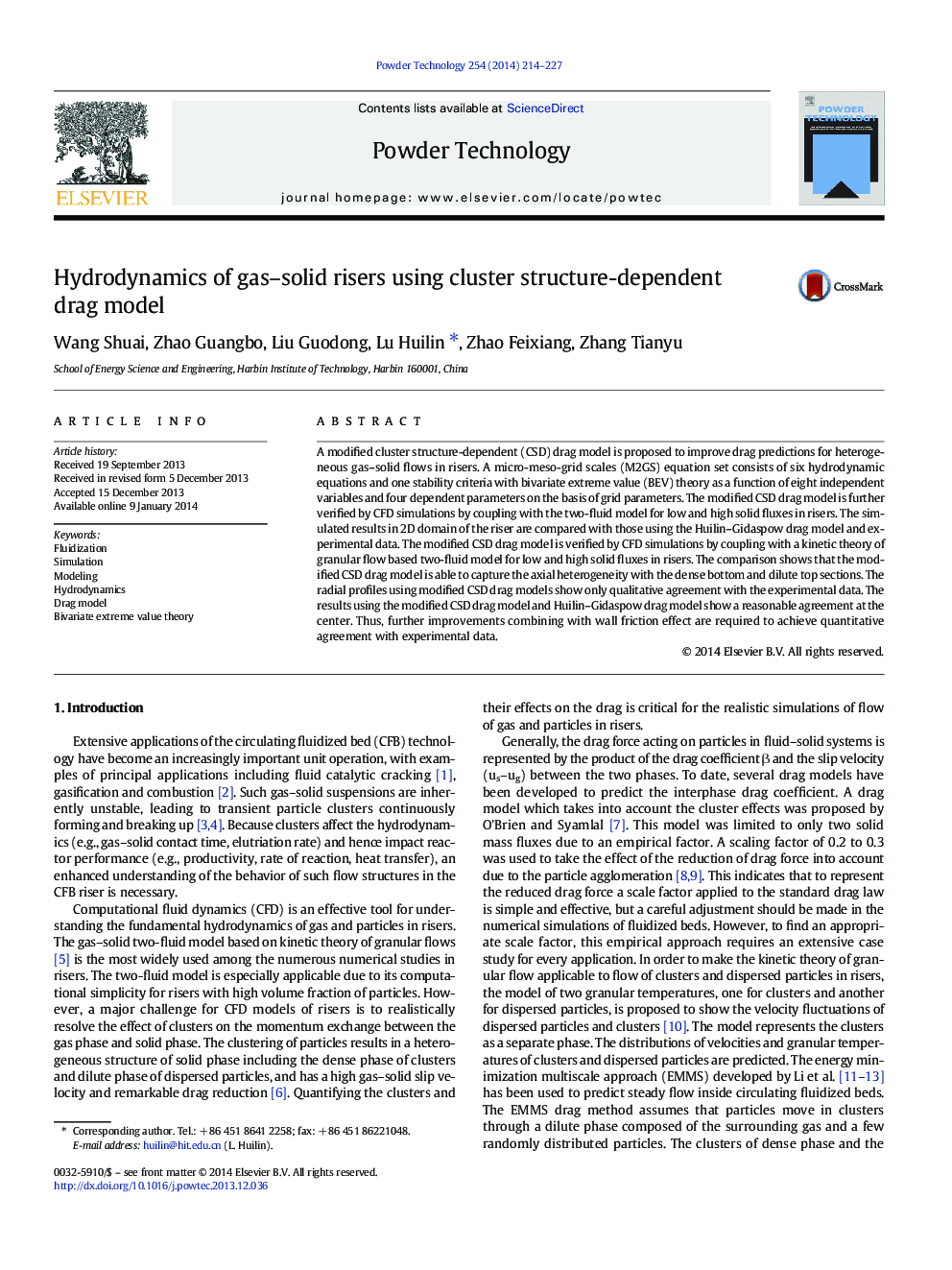| کد مقاله | کد نشریه | سال انتشار | مقاله انگلیسی | نسخه تمام متن |
|---|---|---|---|---|
| 236246 | 465666 | 2014 | 14 صفحه PDF | دانلود رایگان |
• A cluster structure-dependent (CSD) drag model is proposed for heterogeneous gas-solid flows.
• A micro-meso-grid scales (M2GS) equation set is proposed.
• Bivariate extreme value (BEV) theory is used to close CSD drag model.
• The meso-scale structure parameters as a function of solids volume fractions are predicted.
A modified cluster structure-dependent (CSD) drag model is proposed to improve drag predictions for heterogeneous gas–solid flows in risers. A micro-meso-grid scales (M2GS) equation set consists of six hydrodynamic equations and one stability criteria with bivariate extreme value (BEV) theory as a function of eight independent variables and four dependent parameters on the basis of grid parameters. The modified CSD drag model is further verified by CFD simulations by coupling with the two-fluid model for low and high solid fluxes in risers. The simulated results in 2D domain of the riser are compared with those using the Huilin–Gidaspow drag model and experimental data. The modified CSD drag model is verified by CFD simulations by coupling with a kinetic theory of granular flow based two-fluid model for low and high solid fluxes in risers. The comparison shows that the modified CSD drag model is able to capture the axial heterogeneity with the dense bottom and dilute top sections. The radial profiles using modified CSD drag models show only qualitative agreement with the experimental data. The results using the modified CSD drag model and Huilin–Gidaspow drag model show a reasonable agreement at the center. Thus, further improvements combining with wall friction effect are required to achieve quantitative agreement with experimental data.
Drag coefficient predicted by modified CSD drag model decreases, reaches minimum, and then increases with the increase of solid volume fractions.Figure optionsDownload as PowerPoint slide
Journal: Powder Technology - Volume 254, March 2014, Pages 214–227
